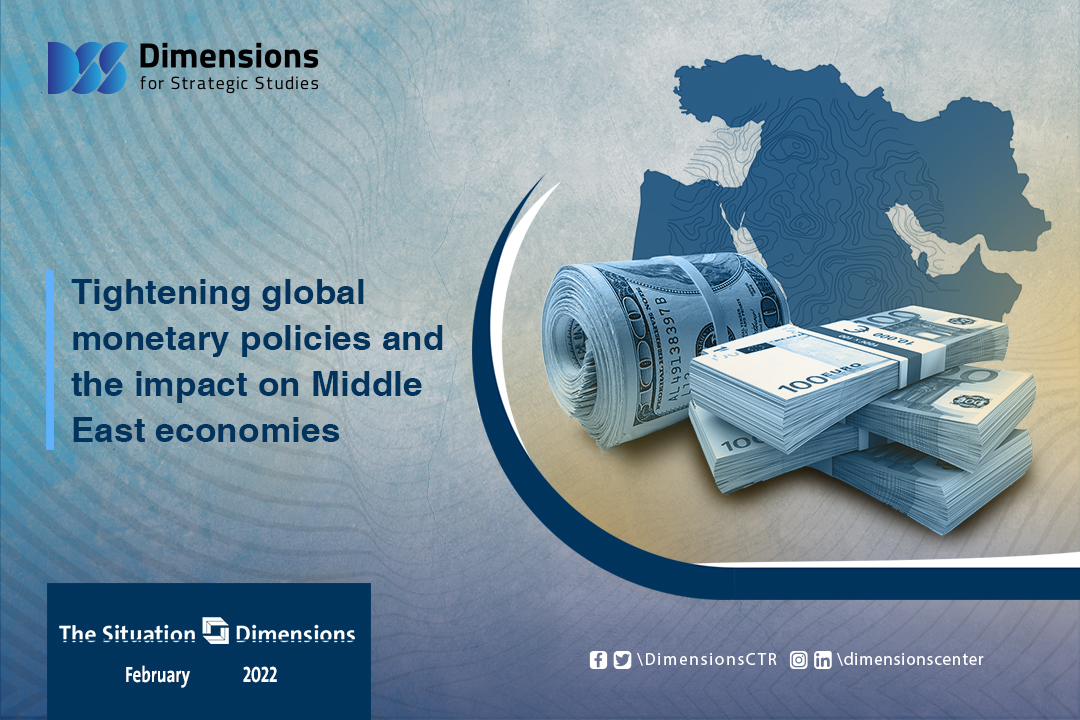
Tightening global monetary policies and the impact on Middle East economies
2022-02-081517 view
With the outbreak of COVID-19 that swept the world in early 2020, governments started supporting businesses and families to confront the pandemic. Such steps were in forms of tax cuts, cash grants, exemption from paying outstanding bills and other facilitating measures, in addition to reducing interest rates in banks, in an attempt to stimulate economies. That was an attempt to inject the economy with what activates demand and minimizes recession possibilities.
These support packages and expansionary monetary policy played a decisive role in the stability of the world's economies, including the economies of the region, in the face of the pandemic. Such measures, however, contributed on the other hand to increasing inflationary pressures.
The United States of America - a major trading partner for the economies of the Middle East - has experienced the highest inflation rate in four decades. In the Middle East region, we could notice that inflation in the Gulf countries hit above 2% for the first time in years. Turkey also suffers from structural inflation that the global and local expansionary monetary policy contributed to increase it. Egypt, for its part witnessed inflation rates of more than 6%. Ethiopia was hit as well.
There is no doubt that the economies of the Middle East were clearly affected by the rise in global inflation. However, they were able to benefit from expansionary policies to stimulate their economic growth, increase export figures, and achieve greater access to global markets. Early in 2022, global central banks began to address high inflation. These measures may include controlling the monetary supply by raising interest rates and offering debt securities. In this context, the coming months will witness clear measures that will be reflected in reducing inflation rates in these countries.
The measures that the major countries intend to take for reducing inflation will lead to a slowdown in global growth. This will generate financial and economic turmoil in the economies of the countries of the region on both sides of the expected growth as well as external borrowing, which will be affected by raising interest rates. This means that paying more money for more borrowing.
Moreover, these countries - taking the rise in the price of the dollar into account - will have to sacrifice more foreign reserves to control the exchange rate. That will often have a severe impact on the economies of Turkey, Egypt and Iran, and to a lesser extent on the economies of the Gulf countries, which will pass - due to the expected rise in the price of oil - through a phase of re-compensating its cash reserves.
Perhaps the biggest risks to the economies of the Middle East are related to the uncertainty that will prevail in the region and global markets. This situation is likely to contribute to a decline in investment flows and a slowdown in growth. It might also contribute to raising public debt and lowering credit ratings for some economies in the region.





